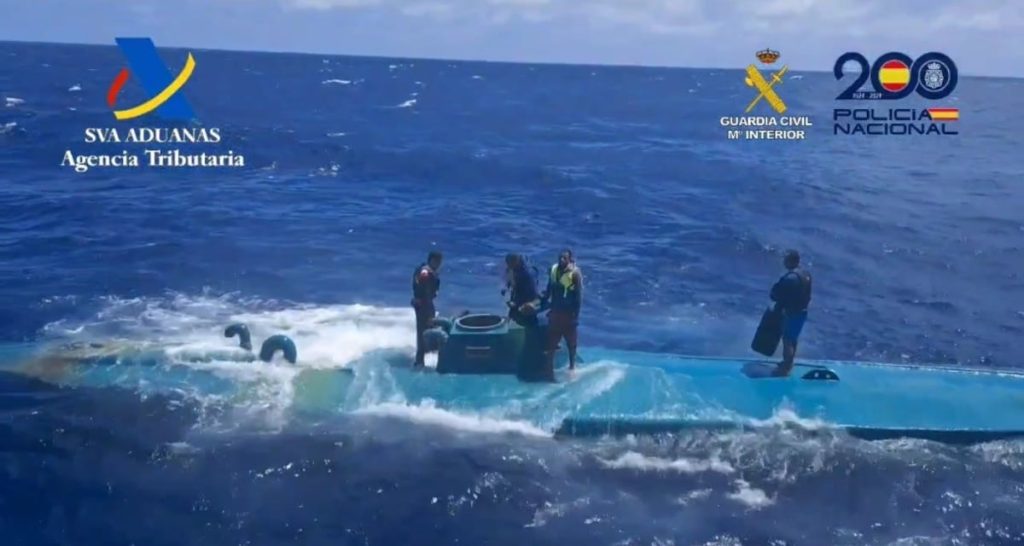Four crew members of a narco-submarine were caught in high seas, 280 nautical miles from Cadiz and 150 from Cape St. Vincent, when they intentionally sank the vessel and attempted to save themselves by swimming to the surface. The dangerous maneuver took place on a Tuesday just before 3 p.m. in the Atlantic waters as agents aboard the Furmal vessel from the Customs Surveillance Service were about to board. The four occupants, all Colombian nationals, were rescued moments after the submarine sank around 3:35 p.m. and were immediately arrested. The submarine and its cargo were lost and are unrecoverable due to the depth of the sea in the area where it sank. The vessel, known as a “low-profile vessel” in police jargon, was believed to be carrying a load of cocaine that the crew intended to transfer to speedboats in order to be landed on the coast of Cadiz. The submarine had a length of 20 meters and the capacity to transport up to four tons of drugs. In the past five years, five similar vessels have been seized in Spain. Another similar vessel was spotted this month about 100 nautical miles north of Luarca, but managed to evade interception and return empty to South America.
The sinking of the submarine occurred rapidly during the operation, which involved the National Police, Civil Guard, and Customs Surveillance Service coordinated through the Intelligence Centre against Terrorism and Organized Crime (CITCO). The vessel was alongside the submarine to protect the crew from the rough sea conditions. Despite efforts during the intervention, none of the belongings on board the vessel or the crew’s mobile phones were recovered, which could have provided valuable information about the cargo’s recipients or origin. Due to technical difficulties and high costs, investigators do not consider the possibility of salvaging the sunken vessel. The location of the vessel was no coincidence, as the DEA had been providing the position of the semi-submarine to Spanish authorities for approximately two weeks through international collaboration channels, allowing them to track its trajectory and intercept it before reaching the presumed point of cargo transfer.
The sunken narco-submarine had “identical” characteristics to vessels detected in recent years, according to police sources. In addition to its 20-meter length, it had a fiberglass structure painted a color similar to the water, making it challenging to detect when navigating unless in close proximity. The vessel also featured a hatch on the top, side and front windows, an air vent, and a rear engine. Those traveling on such vessels, likely members of a Colombian cartel, are typically affiliated with the organization owning the drugs being transported. The operation to intercept the narco-submarine was carried out shortly after the Fulmar vessel from the Customs Surveillance Service participated in another joint operation with the National Police and Civil Guard off the north of La Palma island. The authorities had received information about a vessel, potentially a fishing boat, intending to transfer its cargo to a speedboat for transportation to the mainland. The information proved accurate, as a vessel was detected in the early hours of the past Saturday throwing drug packages overboard when discovered.
The speedboat managed to flee due to rough seas and high speeds, with one vessel suspected to be the same found abandoned the next day on Tazacorte beach in La Palma. However, the Customs Surveillance Service vessel was able to recover 30 packages weighing nearly 900 kilograms of drugs thrown into the sea by the fleeing criminals. The pursuit lasted six hours, according to the National Police and Civil Guard. All these incidents have been reported to the Anti-Drug Prosecutor’s Office of the National Court, which has forwarded the proceedings to the duty judge to continue investigations, take statements from the crew of the semi-submarine, and attempt to identify those involved in the La Palma drug transfer operation.


